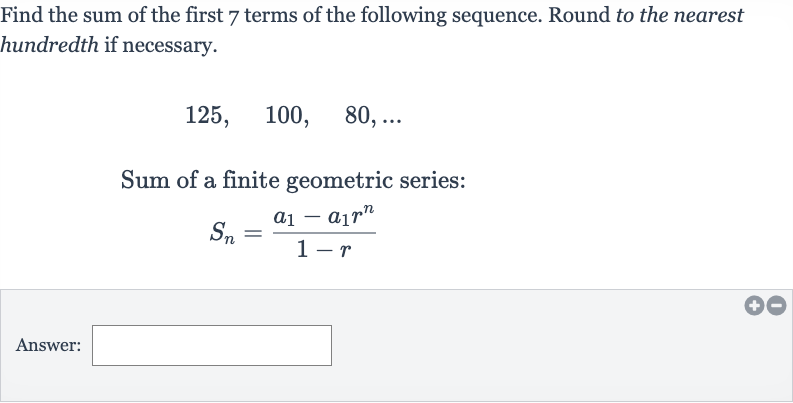Full solution
Q. Find the sum of the first terms of the following sequence. Round to the nearest hundredth if necessary.Sum of a finite geometric series:Answer:
- Identify Sequence Type: To find the sum of the first terms of the sequence, we first need to identify the type of sequence we are dealing with. The given sequence is , , , ... which appears to be a geometric sequence because each term is obtained by multiplying the previous term by a constant ratio.
- Confirm Geometric Sequence: To confirm that this is a geometric sequence, we need to find the common ratio . We can do this by dividing the second term by the first term, and the third term by the second term. If the ratio is the same, then it is a geometric sequence.Since the ratio is the same, we have confirmed that this is a geometric sequence with a common ratio of .
- Apply Geometric Series Formula: Now that we have identified the sequence as geometric with a common ratio of , we can use the formula for the sum of the first terms of a geometric series:where is the sum of the first terms, is the first term, and is the common ratio.
- Calculate Sum: We will now plug in the values into the formula to find the sum of the first terms: (the first term) (the common ratio) (the number of terms we want to sum)
- Round to Nearest Hundredth: Let's calculate the sum:
- Round to Nearest Hundredth: Let's calculate the sum:Finally, we round the sum to the nearest hundredth as instructed:

